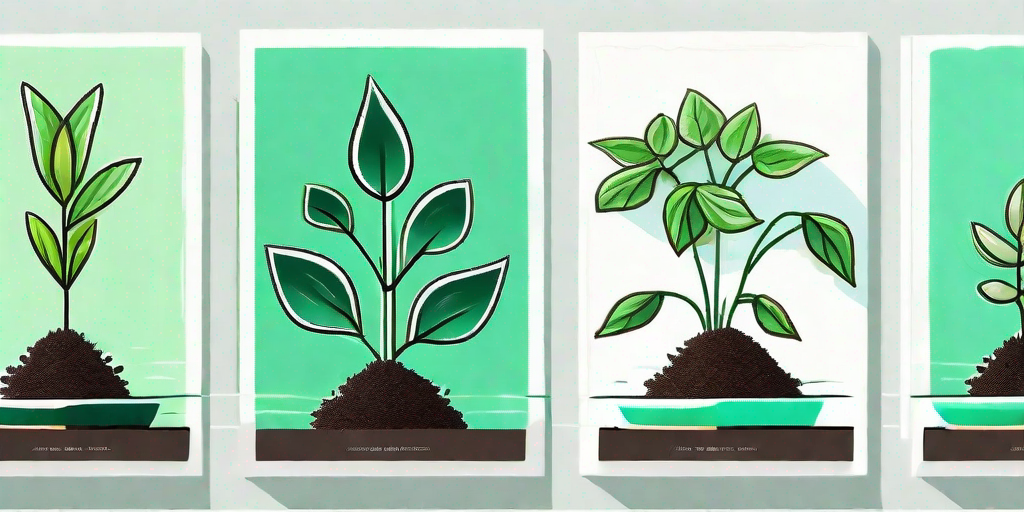
Welcome, green-thumbed enthusiasts and curious beginners alike! Today, we're embarking on a journey from seed to sprout, exploring the fascinating world of F1 plants. If you've ever wondered how to grow these hybrid wonders, you're in the right place. Buckle up, because it's time to get our hands dirty (literally) and dive into the soil of knowledge!
Understanding F1 Plants
Before we start sowing seeds and watering sprouts, it's essential to understand what F1 plants are. F1 stands for "Filial 1" or first-generation hybrid plants. These are not your average garden variety (pun intended). They are the offspring of two different parent plants, each with its own set of desirable traits. The result? A super plant that combines the best of both parents!
Now, you might be wondering, "Why go through all this trouble for a plant?" Well, F1 plants are known for their uniformity, vigor, and higher yield. They are the secret weapon of many professional gardeners and farmers. Plus, let's be honest, who doesn't want to brag about growing their own super plants?
The Science Behind F1 Plants
Without getting too deep into the rabbit hole of genetics, here's a quick rundown. When two plants with desirable traits are cross-pollinated, their seeds produce F1 plants. These plants inherit the best qualities of their parents, thanks to a phenomenon called 'heterosis' or 'hybrid vigor'. This is nature's version of a power-up!
However, it's worth noting that if you try to save seeds from an F1 plant for replanting, the resulting plants (known as F2) won't necessarily retain the same traits. This is because they mix and match traits from their F1 parent and a pollinator plant. So, if you want to keep growing F1 plants, you'll need to buy new seeds each time. Think of it as a recurring investment in your garden's greatness.
How to Grow F1 Plants
Now that we've covered the basics, let's get to the fun part - growing your own F1 plants. Whether you're a seasoned gardener or a newbie, these steps will guide you through the process.
Remember, growing F1 plants is like baking a cake. You need the right ingredients (seeds, soil, water), the right conditions (temperature, light), and a dash of patience. So, let's roll up our sleeves and get started!
Choosing the Right Seeds
First things first, you need to choose the right seeds. There are many varieties of F1 plants available, from tomatoes and cucumbers to marigolds and petunias. When choosing seeds, consider your gardening goals. Are you looking for a bountiful harvest or a beautiful flower display? Do you want plants that are disease-resistant or drought-tolerant? Once you've decided, you can buy F1 seeds from a reputable supplier.
Remember, quality seeds are the foundation of a successful garden. So, don't skimp on this step. Your future plants will thank you!
Planting the Seeds
Once you have your seeds, it's time to plant them. Here's a step-by-step guide:
- Fill a seed tray or pots with a good quality compost.
- Place the seeds on the surface of the compost. Make sure they have enough space to grow.
- Cover the seeds with a thin layer of compost or vermiculite.
- Water the seeds gently. You want the compost to be moist, but not waterlogged.
- Place the tray or pots in a warm, light place. A windowsill or a heated propagator is ideal.
- Wait for the seeds to germinate. This can take anywhere from a few days to a few weeks, depending on the plant.
Remember, patience is a virtue, especially in gardening. So, don't worry if your seeds don't sprout immediately. They're just taking their sweet time to become the super plants they're meant to be.
Caring for Your Sprouts
Once your seeds have sprouted, it's time to care for them. This involves watering, feeding, and eventually, transplanting them to larger pots or the garden.
Water your sprouts regularly, but be careful not to overwater. Too much water can cause the roots to rot. Feed your sprouts with a balanced plant food to help them grow strong and healthy. When they're big enough, transplant them to their final growing place. Remember to harden them off first – this means gradually acclimating them to outdoor conditions.
With the right care, your sprouts will soon grow into mature F1 plants, ready to impress with their vigor and yield.
Frequently Asked Questions
Can I save seeds from F1 plants?
While you can technically save seeds from F1 plants, it's not recommended. The resulting plants (F2) won't necessarily have the same traits as the F1 parent. So, if you want to continue growing F1 plants, it's best to buy new seeds each time.
Are F1 plants GMOs?
No, F1 plants are not GMOs. They are created through traditional cross-pollination methods, not genetic engineering. So, you can rest easy knowing your F1 plants are 100% natural.
Why are F1 seeds more expensive?
F1 seeds are more expensive because they are more difficult and time-consuming to produce. Each seed is the result of careful cross-pollination between two parent plants. However, the higher yield and superior traits of F1 plants often make the extra cost worthwhile.
Conclusion
And there you have it, folks! A comprehensive guide to growing F1 plants. Whether you're a gardening guru or a budding beginner, we hope this guide has shed some light on the fascinating world of F1 plants. So, why not give it a try? After all, who doesn't want to grow their own super plants?
Remember, gardening is a journey, not a destination. So, enjoy the process, learn from your mistakes, and don't forget to have fun. Happy gardening!















